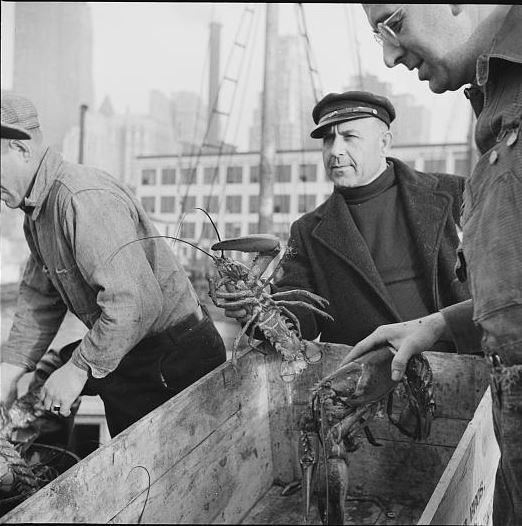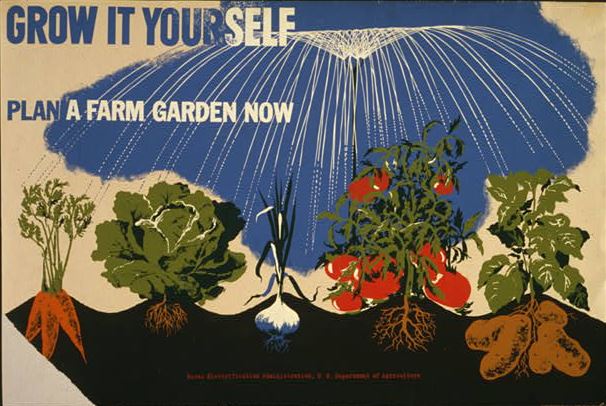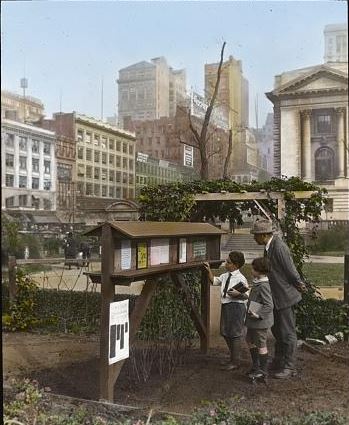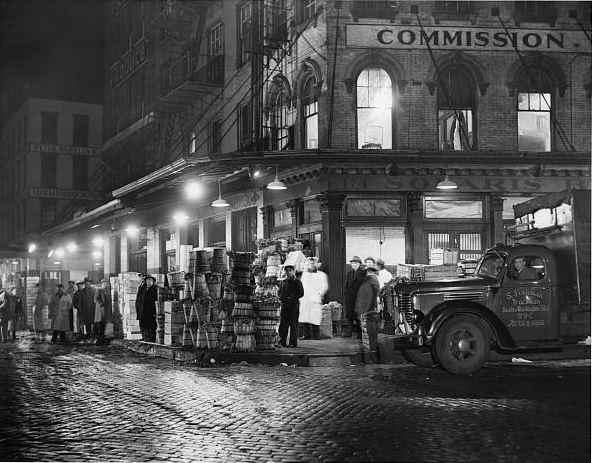Blog Archive
The Big Apple, and Tomato, and Squash
Today’s blog is written by Anna Poaster who is the Farm Manager at Hellgate Farm in Astoria, Queens and coordinates the garden-based nutrition education programming for the Children’s Aid Society. In her spare time, she is an avid composter.
New York has always been a food city; whether it be Halal off a street cart or a five star dinner in a world-renowned restaurant, New Yorkers love to eat. According to Columbia University, there are “approximately 20,000 restaurants, 13,000 food retailers, 1,600 public schools, numerous hospitals, and other nonprofit service providers, as well as 90 farmers’ markets” in New York City.
We are lucky to delight in the colossal variety of foods from all over the world that are available to the city. To feed New York, over 28.6 million tons of food enters the city every year! About 18% of food in New York City came from international sources, while more than half of our food comes from the United States, and a good and growing proportion of it comes from the Northeast.
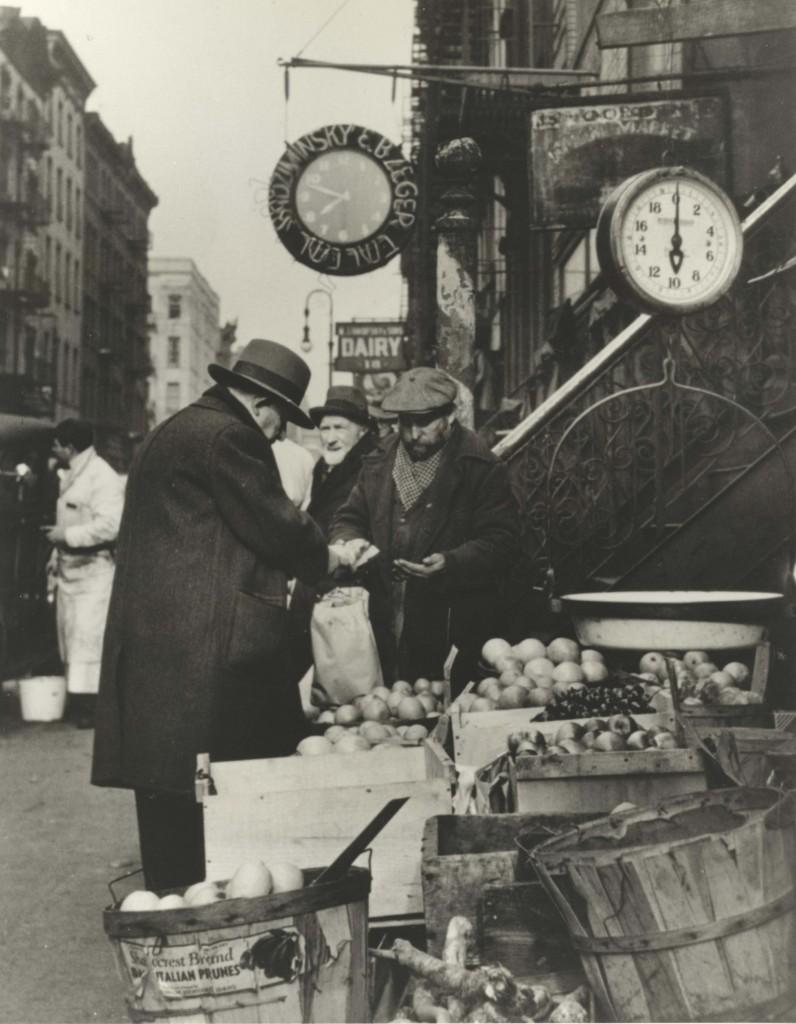
A fruit stall on the Lower East Side in the 1930's. Lower East Side Tenement Museum Photographic Collection.
96% of the food coming into the city is driven in on trucks, and this places a big burden on the city’s infrastructure and on us as consumers. Our roads are clogged with big 18 wheelers, and for every toll bridge and gas price hike, our food prices sneak up.
But New Yorkers also grow their own food, and have for a long time. Much of New York City was farmland for centuries! You can still visit the remnants of that culture through the Historic House Trust of New York City, a non-profit organization that works with the New York City Department of Parks and Recreation to protect over 20 historic homes and cultural sites in all five boroughs. One of these homes that are open to the public is the Queens County Farm Museum in Little Neck, which dates back to the 1690’s and still has a fantastic and hugely productive farm (with adorable animals!).
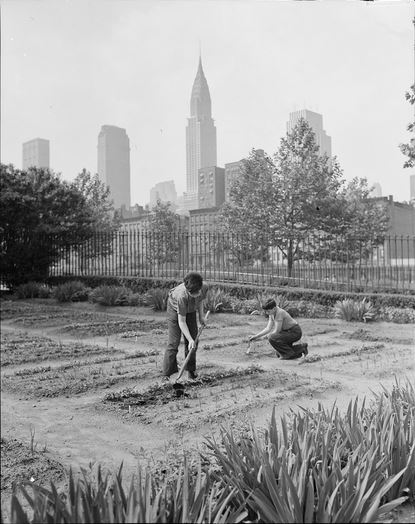
A school victory garden on 1st Avenue between 35th and 36th Streets, New York City, ca. 1944. Image via the Library of Congress.
Despite the fact that New York is the most urban city in the country and it might seem like there is not much space on which to farm, there are an incredible number of food producing gardens currently operating in the all five boroughs and on all sorts of land.
Five Borough Farm, a report by the Design Trust for Public Space, is a beautiful record of the many different kinds of urban agriculture projects in New York City and their diverse goals and methods. It identifies 4 types of farms (Community Gardens, Community Farms, Commercial Farms, Institutional Farms) of which there are hundreds in the city, growing food. And there are more projects blooming every year!
I am the Farm Manager at Hellgate Farm in Astoria, Queens. We work in residential lots and on rooftops to grow vegetables, fruits and flowers, as well as keep chickens and bees. We sell our produce to people who live nearby through a Community Supported Agriculture (CSA) model. A CSA model is where a farmer offers a certain number of “shares” to the public, which typically consist of a box of vegetables, but other farm products may be included. Interested consumers purchase a share (sort of like a membership or a subscription) and in return receive a box (bag, basket) of seasonal produce each week throughout the farming season.
CSAs are great ways for people in the city to eat ultra-fresh food, to get exposed to new vegetables, and to develop a relationship with the farmer who grows their food. Participants usually get to visit the farm at least once a season and they find that kids typically favor food from “their” farm – even veggies they’ve never been known to eat! Farmers also benefit from CSAs, because they can sell their foods early in the season and get to know the people who eat the food they grow.
Growing food in the city has real limitations: instead of deer to worry about, cats and rats are our main scourge. Like all New Yorkers, we have to be incredibly creative to maximize our space in the most efficient ways, and are always pressed to grow in smaller spaces than we would like. But despite the challenges, urban agriculture is a wonderful movement in the city.
Most exciting is its potential to encourage healthy behaviors, like eating fresh produce, caring about your community, and spending time outside. And the production is not just token: we have the ability to grow a lot of food in this concrete jungle. During World War II, Americans grew 40% of the food they consumed, including in New York! Growing food is an important part of New York’s past, present, and future.
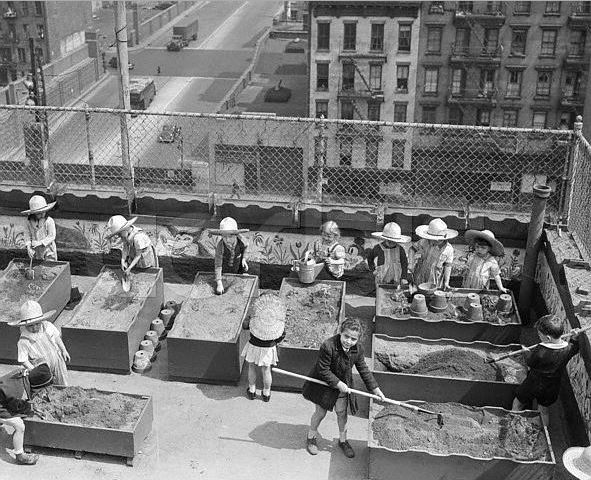
A victory garden at the West Side Center, tended by the children of the Children's Aid Society, 1943.
Thanks, Anna!
Our Tenement Talk on Wednesday May 21st, will explore Urban Appetites, the new book from Cindy R. Lobel. This history of 19th century food and culture in New York City documents a time when the city’s population was booming and the foodways were evolving. Lobel will be joined by a panel of notable foodies, moderated by food writer Jane Ziegelman, discussing present-day food markets and the state of food in the city today.
– Posted by Anna Poaster and Lib Tietjen
